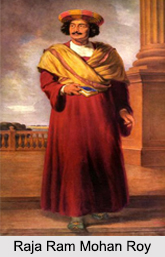 Socio-Religious Reform Movements in India were part of eighteenth-century and twentieth-century India. During this time, on one side, India was suffering from stagnating traditional culture and society at very low ebb; while on the other hand, India possessed a still traditional society in the throes and the creative excitement of modernising and of emerging as a new nation. The nineteenth century initiated this process of transformation in the religious, social, economic, political, and cultural spheres. The impact of the British Empire influenced administration, legislation, trade, network of communications, industrialisation and urbanisation in India, affecting not only society as a whole, but also the traditional patterns of life. British scholars, educators and missionaries also impacted the cultural field. The reformers consciously reacted to the new situation and advocated deliberate changes in social and religious attitudes and customs. The reformers had a great impact on nineteenth-century India, but there were also other factors effecting change.
Socio-Religious Reform Movements in India were part of eighteenth-century and twentieth-century India. During this time, on one side, India was suffering from stagnating traditional culture and society at very low ebb; while on the other hand, India possessed a still traditional society in the throes and the creative excitement of modernising and of emerging as a new nation. The nineteenth century initiated this process of transformation in the religious, social, economic, political, and cultural spheres. The impact of the British Empire influenced administration, legislation, trade, network of communications, industrialisation and urbanisation in India, affecting not only society as a whole, but also the traditional patterns of life. British scholars, educators and missionaries also impacted the cultural field. The reformers consciously reacted to the new situation and advocated deliberate changes in social and religious attitudes and customs. The reformers had a great impact on nineteenth-century India, but there were also other factors effecting change.
The nineteenth-century reform movement became closely conjoined to a political movement, and consequently sought to influence political authority, administration, and legislation. This political movement eventually became an all-India nationalist movement. Whereas previously social reform was inextricably interwoven with religious motivation and improvement, in the nineteenth century, the relationship of the two fluctuated, and sometimes secular and rationalistic motives were the decisive ones. Among the most noteworthy reformers is Swaminarayana of Gujarat, initiator of a sect bearing his name and Mahatma Ramalingam of Tamil Nadu.
The British administration and European literature brought a constellation of fresh ideas which constituted a challenge to the new intellectuals. Rationalism as the basis for ethical thinking, the idea of human progress and evolution, the possibility of scientifically engineering social change were all unfamiliar to the traditional society. The Christian missionaries also had a strong influence. The nineteenth-century reformers, starting with Ram Mohan Roy, acknowledged their indebtedness even though certain aspects of missionary`s activity were opposed. Initially, India had already produced a small social group, the English educated intelligentsia, closely associated with British administration. They quickly realised the faults in the social and religious characteristics of society and thus several ideas of reform first arose amongst them. At this stage, there was no concern for the general people, or any desire to transform the structure of society at large. Rather the focus was on improving and reshaping their lives according to the new standards.
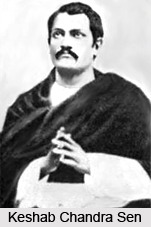 Brahmo Samaj
Brahmo Samaj
Bengal was first to undergo significant British influence and to produce the new English-educated group. By the early 1800s, three distinct groups emerged, the radicals, the reformers, and the conservatives. Ram Mohan Roy (1772-1833) was the first great modern reformer, and has been called `The Father of Modern India` for good reason. In the religious sphere Ram Mohan`s main target of attack was the Hindu system of idolization, its mythology and cult. As a social reformer, Ram Mohan`s interest was mainly in the dreadful condition of women in Hindu society, an interest that dominated the social reform movement for many decades. He is rightly famous for his long and successful campaign for the abolition of sati, the self-immolation of widows on the funeral pyres of their husbands, and he fought incessantly against child marriage and for female education. The crowning achievement of Ram Mohan`s organizational efforts was the foundation of the Brahmo Sabha (later known as Brahmo Samaj) in 1828.
The Socio-Religious Reform movements of the 19th century in West Bengal, Maharashtra, Uttar Pradesh and Punjab aimed at checking the influence of Christian Missionaries. The missionaries wished to convert Indians to Christianity and to cleanse Hindu society of evils such as Sati and infanticide. The aim of Brahmo Samaj was to save middle class families of Bengal from adverse effects of Christianity.
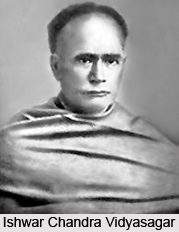 Brahmo Rites
Brahmo Rites
After the death of Ram Mohan Roy, Debendranath Tagore (1817-1905) took over its leadership and gave it a new direction. He drew up a declaration of faith, established a theological school, sent out the first Brahmo missionaries, and created a new liturgy, the `Brahmo Rites`. He himself was inclined towards the contemplative and the bhakti movement of Hinduism, and averse to Ram Mohan`s rationalism. With a stress on devotion, ethical duties, and the near-Vedic but non-idolatrous Brahma rites, the Samaj moved closer to the mainstream of Hinduism, as it grew quickly in numbers. Later with Keshab Chandra Sen (1838-84) a new wind started to blow in the Samaj. He was an iconoclastic reformer, repudiating all Hindu cults, rejecting caste and the seclusion of women. In religion he had a new `universalistic` tendency, with strong leanings towards Christianity.
Widow Remarriage Movement
During this time Bengal also produced the scholar Ishwar Chandra Vidyasagar (1820-91) who pioneered the widow remarriage movement, the first social reform cause that gained importance nationally, and saw it to a successful conclusion. The reform he advocated and saw become law that a high-caste widow could legally remarry, although its successful application in society was few and far between. Nevertheless, the widow remarriage movement was very important because it became the inspiration of other reform movements all over the country.
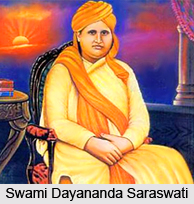 Satyasodhak Samaj
Satyasodhak Samaj
The growing religious and social reform awareness started in Maharashtra from 1840. In this stage, Gopal Hari Deshmukh (1823-92), known as Lokahita-wadi, denounced the absolute intellectual and moral dominance of Brahmins over Hindu life. His friend and collaborator Jotiba Govind Phule (1827-90), of low caste, took up this fight against Brahmin oppression in his voluminous prose and poetic works, and formed an organization for the improvement of the low castes, the Satyasodhak Samaj.
Prarthana Samaj
In 1867 the Prarthana Samaj was formed, in Maharashtra, for religious and social reform, The theism of the Prarthana Samaj was similar to that of its Bengali counterpart, but it was consciously linked with the bhakti tradition of the Maharashtrian saints.
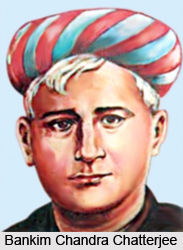 Arya Samaj
Arya Samaj
Another important figure of Indian Socio Religious reform movement was Swami Dayananda Saraswati (1824-83) who in 1875 published his major work the Satyarth Prakash and founded his reform society, the Arya Samaj. He attacked polytheism, idolatry, and the many superstitious beliefs and rites connected with them, and the stranglehold of the Brahmins on religious practice. According to him, this religion was in fact the original Vedic religion, which was contained in the four Vedas. Thus Dayananda`s religion, whilst denouncing much of contemporary Hinduism, kept close to orthodoxy in several basic ways: belief in the Vedas, and in karma, allegiance to the six darshanas etc.
From 1880, the predominance of nationalism and politics now began to exert influence on the ideas of religious and social reform which had previously prevailed.
Among the social reformers of India Bankim Chandra Chatterjee and Bal Gangadhar Tilak were notable.
Bankim Chandra Chatterjee
Bankim Chandra Chatterjee (1838-94) found Bengal divided between the traditionalist orthodox and the progressive reformers. His religion combines the humanism of positivism with the activist interpretation of the Krishna myth and of the Bengali cult of the Mother Goddess. His novels in particular awoke in the Bengalis, first the middle class, and later the masses, a self-confidence and pride in their language and their religion.
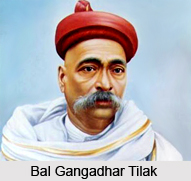 Bal Gangadhar Tilak
Bal Gangadhar Tilak
Another personality from Maharashtra, Bal Gangadhar Tilak (1857-1920) took initiative to promote Hinduism as the only basis of this new spirit. He also inaugurated new Hindu festivals, the Ganesh Chaturti and the Shivaji festival, thus reaching the populace with his ideas of Hindu nationalistic activism, instilling in them a pride in their glorious Marathi past. He advocated the severance of social reform and political agitation.
It was in the 1880s, Behramji Malabari (1853-1912), launched the campaign for the legal checking of infant marriage by an Age of Consent Bill. Further in 1892 the Madras Hindu Social Reform Association came into being, led mostly by radical reformers. During this time, National Social Conference officially acknowledged the various associations, which worked for the welfare of various castes, as reform societies. In 1887, the Kayasth Conference was formed in Lucknow, comprising the group of sub-castes. Another important organization was that of the Vaishyas, established in 1891. In this period the caste organizations kept away from politics, but in the twentieth century they assumed in several areas of India very great political importance. The first two decades of the twentieth century saw Indian politics engaged in the great debate between the moderates, who were completely British-oriented, and the extremists, who advocated militancy, and in their struggle for control of the Congress. In the last two decades of the nineteenth century social reform was dominated by the nationalistic secularists, which eventually changed its image and its model in the direction of revivalist Hindu nationalism, and focused on the general public.
Moreover, under the British rule, India was transformed into one administrative unit with the same legal system all over the country. The country has also become united economically with the development of internal trade and foreign trade. This action was greatly helped by the development of new means of transport and communication system, such as railways and new postal system and telegraph.
By the 1920s the Indian religious and social reform movement lacked importance in India. An important factor was agitation for social reform moved into the practical business of organizing social service, such as the education and uplift of women by the All-India Women`s Conference, village development projects, the organization of the depressed classes and the foundation of labour unions. These new approaches, owe their very existence to those leaders and organizations that, from Ram Mohan Roy to Lala Lajpat Rai, worked for the emergence of national identity and social reform.






































